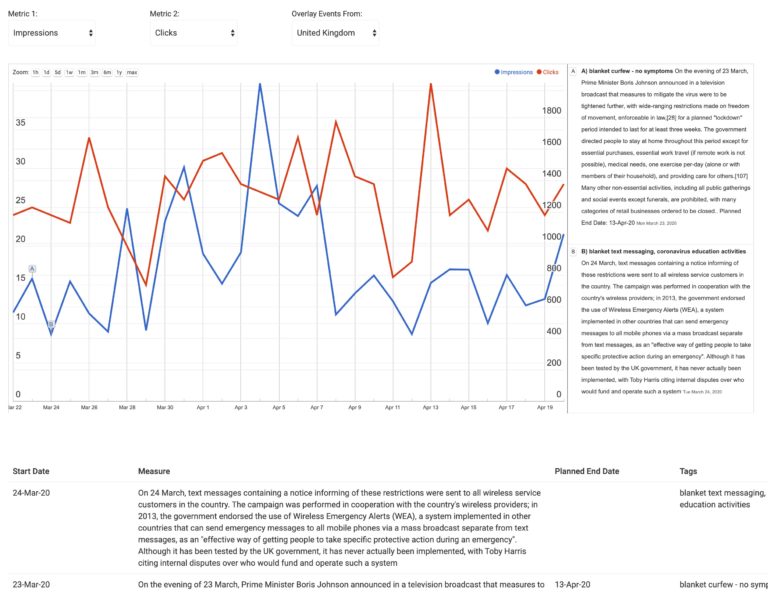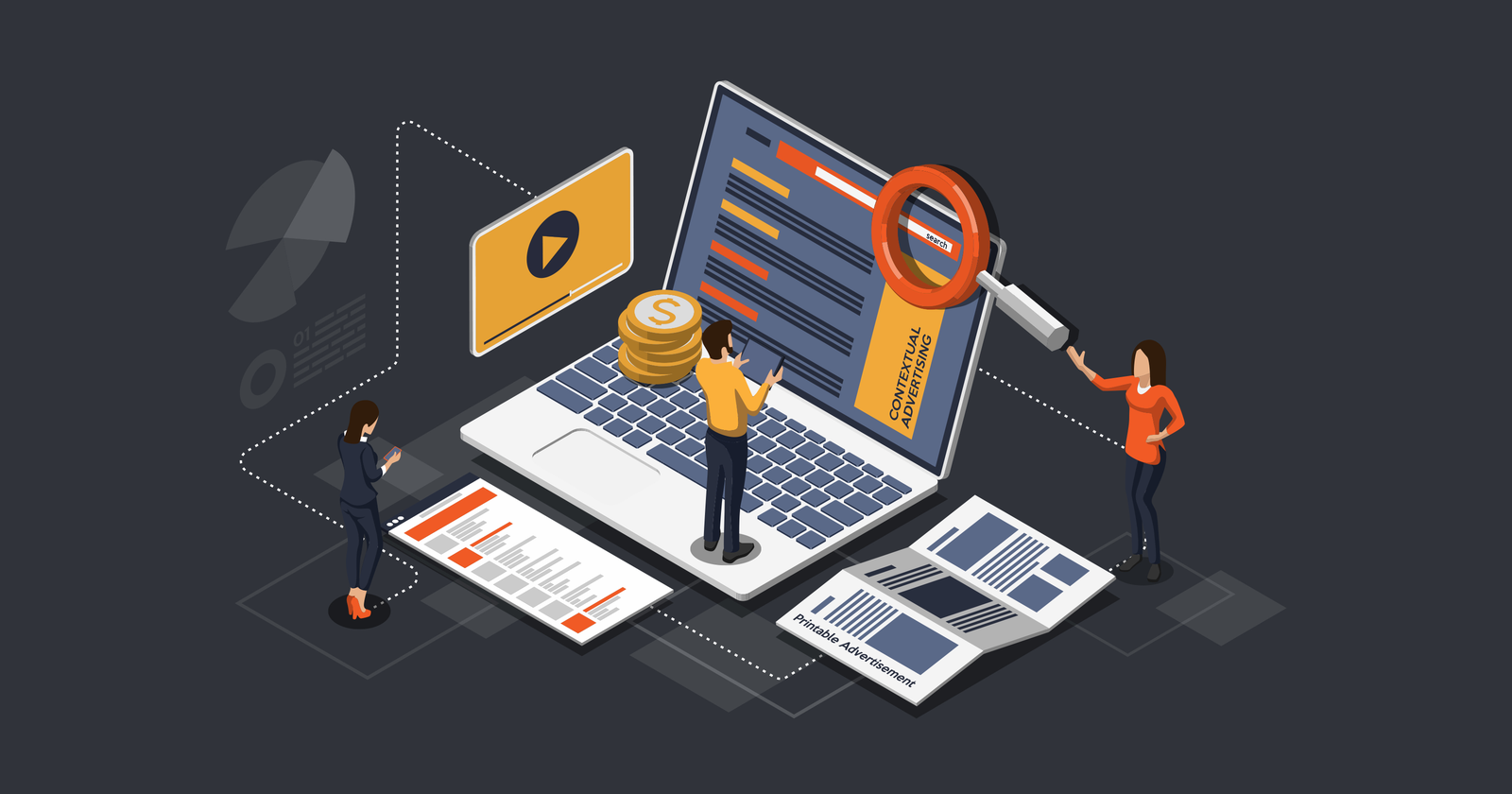I’ve now hosted five PPC Town Halls and welcomed several PPC experts as panelists to share what they’re doing in response to the economic crisis that’s resulting from the COVID-19 pandemic.
I’d like to share a few of the key takeaways we heard.
1. Adapt to Survive in a Volatile Market
The volatility in digital marketing follows that of the real world.
As consumers in different locations have to abide by quickly-evolving government regulations, their behavioral shifts are forcing companies to adapt quickly or risk going out of business.
Levi’s CEO, Chip Bergh, says “this pandemic will further separate the winners and losers.”
But since there is no playbook for the scenario we now face, being nimble and adapting to the situation is going to be a critical part of being a winner.
If you’re on the digital marketing team, the first step to getting your client or company to agree to adapt is to show them data of how the pandemic is impacting them.
Regional Impact of PPC Script
My company, Optmyzr, has written a free Google Ads script that overlays regional coronavirus-related regulations on top of Google Ads performance data.
The annotated timeline can expose the underlying reasons why the results of PPC are in flux.
It can be especially helpful for agencies working with multi-location clients where it may be difficult to stay on top of a multitude of differing local regulations.
 COVID events overlaid on PPC performance data
COVID events overlaid on PPC performance dataPre- & Post COVID-19 Script
Another free visualization script is written by Martin Röttgerding.
It charts key PPC metrics before and after COVID for all accounts in an MCC.
This is useful because it considers the performance of each individual account rather than the aggregate data we tend to hear and which may misrepresent what is happening on an account-by-account basis.
Keyword Planner
And don’t forget about the engines’ own tools that you may have been visiting only sporadically before.
At PPC Town Hall, Google’s Peter Oliveira recommended advertisers review performance planner tools from Google every week to get a sense of changes in the landscape.
Advertisers might notice a change in competition and its corresponding impact on lost impression share.
Based on that they can decide to change targets for automated bidding to be better aligned with current market conditions.
2. Remain Relevant Any Way You Can
My wife just cut my hair and it looks great.
I started working out in my yard and I love not having to drive 15 minutes to the gym.
I wear sneakers more often and I love how comfortable they are.
These are just some of the ways I’m changing.
I don’t know yet to what degree I’ll return to things the way they were before.
That’s not great news for my hairdresser, my gym, and the makers of formal shoewear.
By the way, I can put on my shirt while doing a handstand so that’s indisputable evidence some things can be done as well at home as outside of the home.
We need to nominate another PPC’er to do this challenge next…
As a business, you must prove value, now more than ever, even if you may not get paid the same.
Consumers like routines.
Getting them to try something new is hard, that’s why the cost to acquire a new customer is higher than the cost to retain an existing one.
But now status quo-loving consumers are forced to change.
As a business, this is an opportunity to get a new customer if you can fulfill their exact need.
And it’s also a challenge to figure out how to retain that customer, even if you can only partially meet their need.
3. Sell by Inspiring & Having Up-to-Date Ads
When you advertise, “don’t sound like a used car salesman; be your customers’ partner in solving a problem,” Joe Martinez recommended at PPC Town Hall.
“People are nervous, bored, and anxious; reminding people of that doesn’t inspire them to fall in love with a brand. Shift that messaging to talk about how you’re going to help consumers come out of this.”
Then again, if you are selling cars, connect business data about the local situation so that ad extensions and ad text correctly reflect the scenario.
For example, avoid running your usual ads inviting consumers to your showroom when all you can offer are at-home test drives and some of the best sales incentives in recent years.
If your supply chain is impacted by COVID, “the big danger is advertising products that are out of stock or have low stock, and disappointing users when they land on the page. As an industry we need to do better, because it’s a common complaint I keep seeing,” said Andrew McGarry at PPC Town Hall.
Make sure merchant feed data is synced more frequently and use business-data driven advertising tools to ensure that ads reflect current inventory and pricing.
4. It’s Feast or Famine
When international borders are closed and shelter-in-place orders are enacted, planes have to be grounded.
Airlines, hotels, and car rental companies have little need to advertise.
Tinuiti’s COVID-19 Performance Dashboard illustrates this perfectly and shows ad spend for travel advertisers on Facebook is the hardest hit, down about 80% month-over-month.
At the same time, consumers wanting to minimize trips outside their homes are looking for food and grocery delivery services at unprecedented rates.
But while the demand is there, the supply is not with Whole Foods delivery slots in scarce supply.
Being nimble helps as Instacart is on track to hire over 500,000 new workers to bring supply and demand in line.
“It’s almost a ‘feast or famine’ situation across commerce and service, and there are challenges with both scenarios,” Ginny Marvin from Third Door Media observed during PPC Town Hall.
As a digital marketer, there is more work than ever to keep things on track, regardless of where your company falls on the scale of feast or famine.
We heard from Benu Aggarwal whose agency works in the travel vertical that they immediately found new ways to help their clients, even if that meant going outside of the usual realm of the work they do.
5. It’s the Wild West Again
What makes the situation even more challenging and unique is that we no longer have the benefit of consistent laws that are uniformly enacted, a key criterion for an economy to perform at its peak.
I’ve heard several anecdotal reports of people in one city getting a ticket for the exact same activity that someone in the next city is allowed to do without penalty.
As advertisers, we no longer have the luxury of a uniform landscape.
If you’re a national retail chain, you may have to adapt your ads from city to city to reflect what type of shopping is still allowed:
- Store visits with social distancing.
- Buy online, pick up by car.
- Online orders only.
- Or a total closure.
Besides a patchwork of regulations, we now also face the uncertainty of inconsistent enforcement.
In Los Altos, where I live, one day the police told everyone to leave the school fields, only to have the superintendent email the whole town to say this was a misunderstanding and fields were in fact open.
When rules are changing so quickly that the government can’t keep up, it’s no surprise consumers are confused.
There’s also a new land-grab that is now possible.
“Here’s a major company that runs a large part of the planet’s ecommerce saying it can no longer deliver what it’s conditioned us to expect, and not everyone realizes how disruptive this is,” said Elizabeth Marsten on Amazon’s decision to reprioritize certain FBA products.
“For paid search advertisers who have the ability to self-fulfill or sell via another platform, this is a huge opportunity as FBA shipping times become longer.”
Personally I am learning about a lot of new companies that can help me meet my needs now that there are several of the usual players with logistics problems.
6. Use Audiences to Your Benefit
There is a lot that can be done with audiences, even in search marketing and now may be a great time to try some new things our panelists shared.
If your business is no longer able to close the deal right away, there are still opportunities to “build demand now for when you once again have the ability to deliver the product or service,” said Susan Wenograd at a recent PPC Town Hall.
She specifically referred to low priced social media and display ads that can be used to build audiences and prime the funnel for later on.
Julie Friedman-Bacchini recommended to “use audiences to avoid showing ads to people who work in the most hard-hit verticals.”
While not related to audiences, we heard a similar point from travel advertisers who added lots of new negative keywords when they noticed travel queries for cancellations started outpacing those for new reservations.
7. Experiment With Automated Bidding
I initially had concerns about how automated bidding would respond to an unexpected shift in behavior.
For example:
- Would it quickly catch on to the fact that the same people who used to go shopping online from office parks were now all of a sudden doing those same searches from their homes in different cities?
- Would that break the machine learning’s prediction of the geographic impact on a query’s chances to convert?
Google’s Peter Oliveira responded that “Smart bidding has the ability to pick up signals and compare it to other things going on in the market to make those adjustments. While it uses both aggregated and recent trends, it favors what’s been happening recently,” hence it should work pretty well right now.
Most of what we heard from participants and panelists confirmed what Oliveira said that automated bidding is working.
Kirk Williams shared unexpectedly good results from the maximize clicks strategy and said “Automated bidding works relatively well. Conversions understandably are lower but the ROAS has actually improved.”
But remember that automated bidding needs good data to build predictions and part of that is about having the right measurement in place.
“It’s not a bad time to acquire users even if they’re not all going to convert right away,” Wenograd said.
The underlying point is that last-click attribution models may not work for this particular strategy so a model that values earlier interactions might work better in times like these.
Peter did add to “avoid the set-and-forget mentality, especially now. Smart Bidding is not automated bidding, you should still revise goals weekly.”
To be able to align goals with what’s happening on a regional basis, it may even make sense to get more granular in campaign structure, even if only temporarily.
Remember that campaign structure changes won’t break automated bidding models since the machine learning models look primarily at the connections between query and conversion and disregard things like campaign name.
8. Continue to Learn
Digital marketing has always been a fast-moving field and many of us work from home so we’ve been able to adapt relatively quickly.
But one thing I personally miss is the events where we learn from experts and have hallway conversations with smart peers.
I would also love to have you join an upcoming weekly PPC Town Hall to continue the conversation and benefit from collaborative learning.
More Resources:
- 5 Tips for Managing PPC During the Coronavirus Outbreak
- When Clients Pause PPC: 5 Survival Tips for Marketers
- What’s Happening to Paid Media Performance During COVID-19
Image Credits
Screenshot taken by author, April 2020





